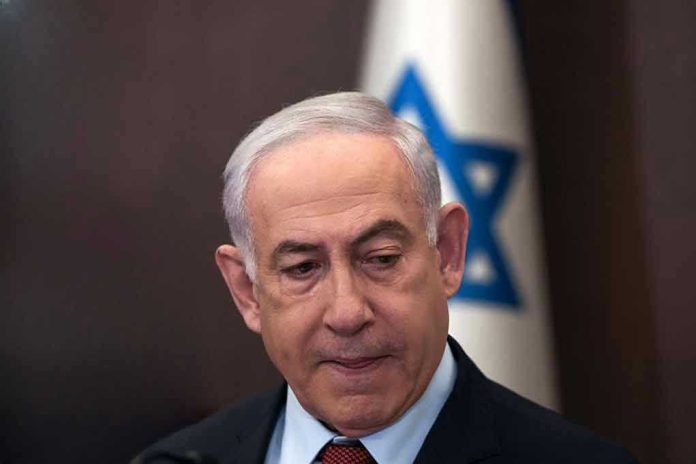
A three-week-old ceasefire crumbled in real-time as Netanyahu ordered immediate military strikes on Gaza, transforming what was supposed to be a humanitarian hostage recovery into the latest flashpoint threatening Trump’s diplomatic achievement.
Story Snapshot
- Netanyahu ordered “forceful” strikes on Gaza on October 28, 2025, barely three weeks after Trump-brokered ceasefire began
- Israel accused Hamas of staging the discovery of hostage remains, calling it a “clear violation” of ceasefire terms
- Tank fire and explosions erupted across Gaza City and Deir al-Balah within hours of the strike order
- Hamas postponed planned handover of hostage remains and accused Israel of fabricating pretexts for aggression
- The escalation threatens to completely unravel the October 10 ceasefire that was designed to facilitate hostage releases
The Hostage Remains Deception That Sparked War
Netanyahu’s strike order stemmed from what Israel characterized as an elaborate Hamas deception involving hostage remains. Israeli drone footage allegedly captured Hamas operatives burying a bag of partial remains in the ground, then arranging for the International Committee of the Red Cross to “discover” them. This staged recovery violated the ceasefire’s humanitarian provisions and prompted Netanyahu’s security consultations that led directly to military action.
The accusation represents more than procedural disagreement. Israel viewed the manipulation as Hamas attempting to control the narrative around hostage recoveries while maintaining plausible compliance with ceasefire terms. Netanyahu’s office issued an immediate response: “Following security consultations, Prime Minister Netanyahu has directed the military to immediately carry out forceful strikes in the Gaza Strip.”
Three Weeks From Peace to Combat Operations
The rapid deterioration exposes the underlying fragility of Trump’s diplomatic framework. The October 10 ceasefire was designed to facilitate hostage releases and enable Israeli troop withdrawals from Gaza territory. Instead, tensions escalated through multiple incidents, including October 26 Israeli airstrikes that killed at least 26 people following the deaths of two Israeli soldiers in Rafah.
Gaza residents responded to the renewed combat with immediate anxiety. Shops closed early across Gaza City as explosions and tank fire erupted in multiple neighborhoods. Associated Press reporters confirmed real-time strikes in both Gaza City and Deir al-Balah, indicating the scope extended beyond targeted operations into broader military action across Gaza’s population centers.
Hamas Response and Diplomatic Collapse
Hamas immediately characterized Israel’s accusations as “fabricating false pretexts for aggression” and warned that continued escalation would obstruct efforts to recover hostages’ bodies. The organization postponed its scheduled handover of hostage remains to the Red Cross, citing the active combat operations as making humanitarian coordination impossible.
Defense Minister Israel Katz escalated the rhetoric, warning Hamas would pay a “heavy price” for attacking IDF soldiers and violating ceasefire terms. The exchange demonstrates how quickly both sides reverted to adversarial positions despite the recent diplomatic progress. The collapse occurred so rapidly that Trump’s earlier statement affirming the ceasefire remained in place became obsolete within 48 hours.
Sources:
Netanyahu orders ‘forceful’ Israeli strikes in Gaza – KNKX
Netanyahu orders ‘forceful’ Israeli strikes in Gaza – KLCC
Netanyahu orders ‘forceful’ Israeli strikes in Gaza – NPR Illinois















